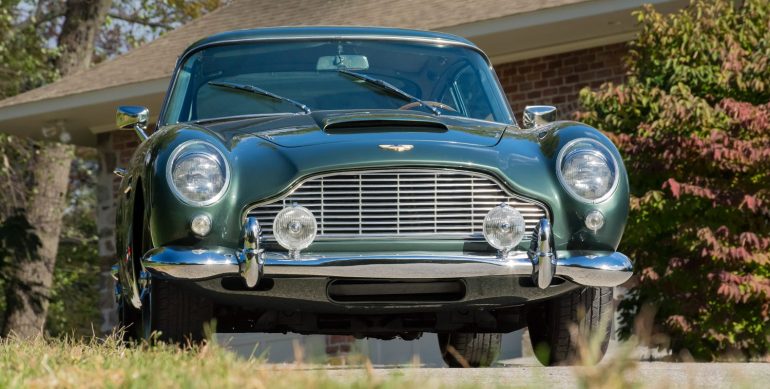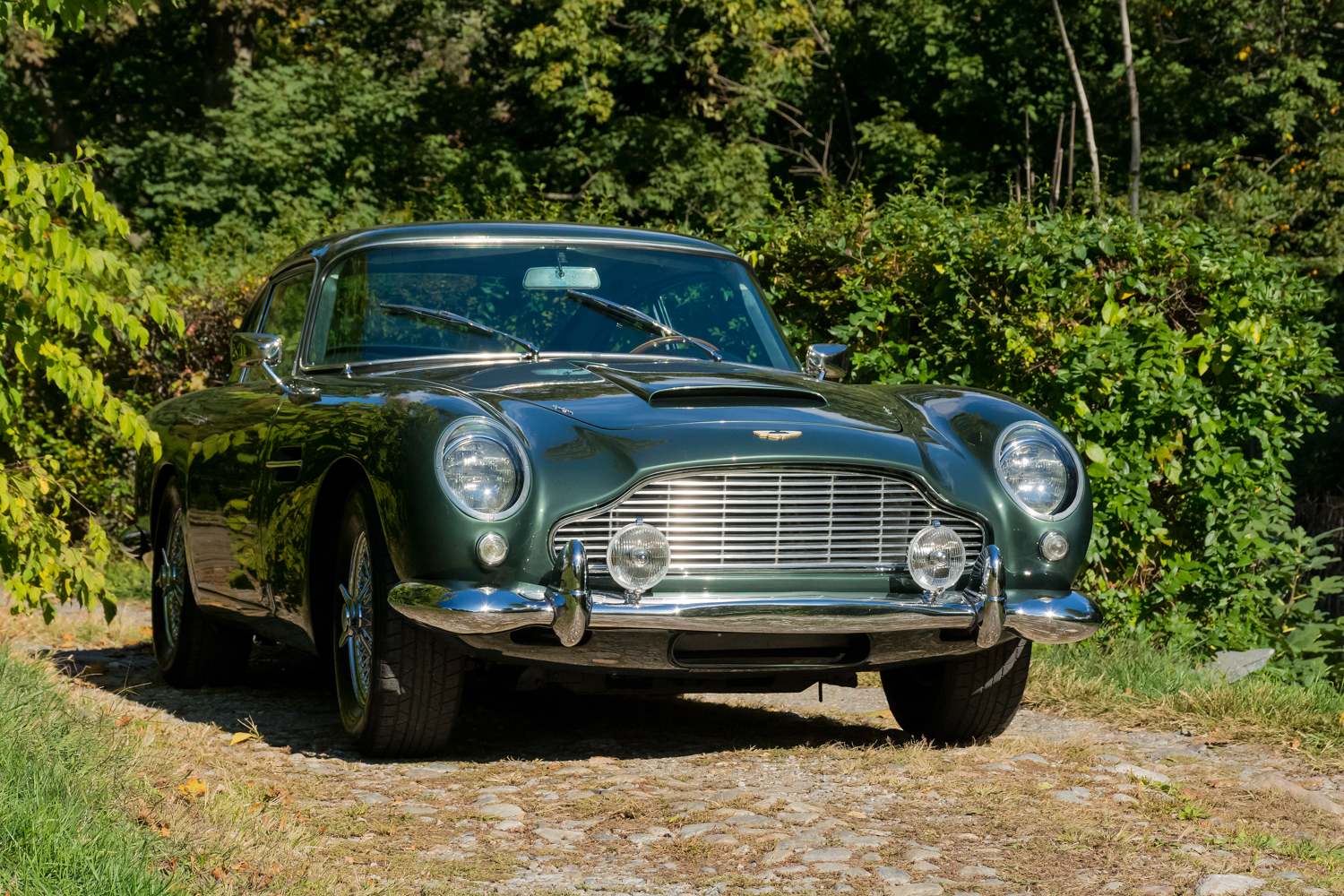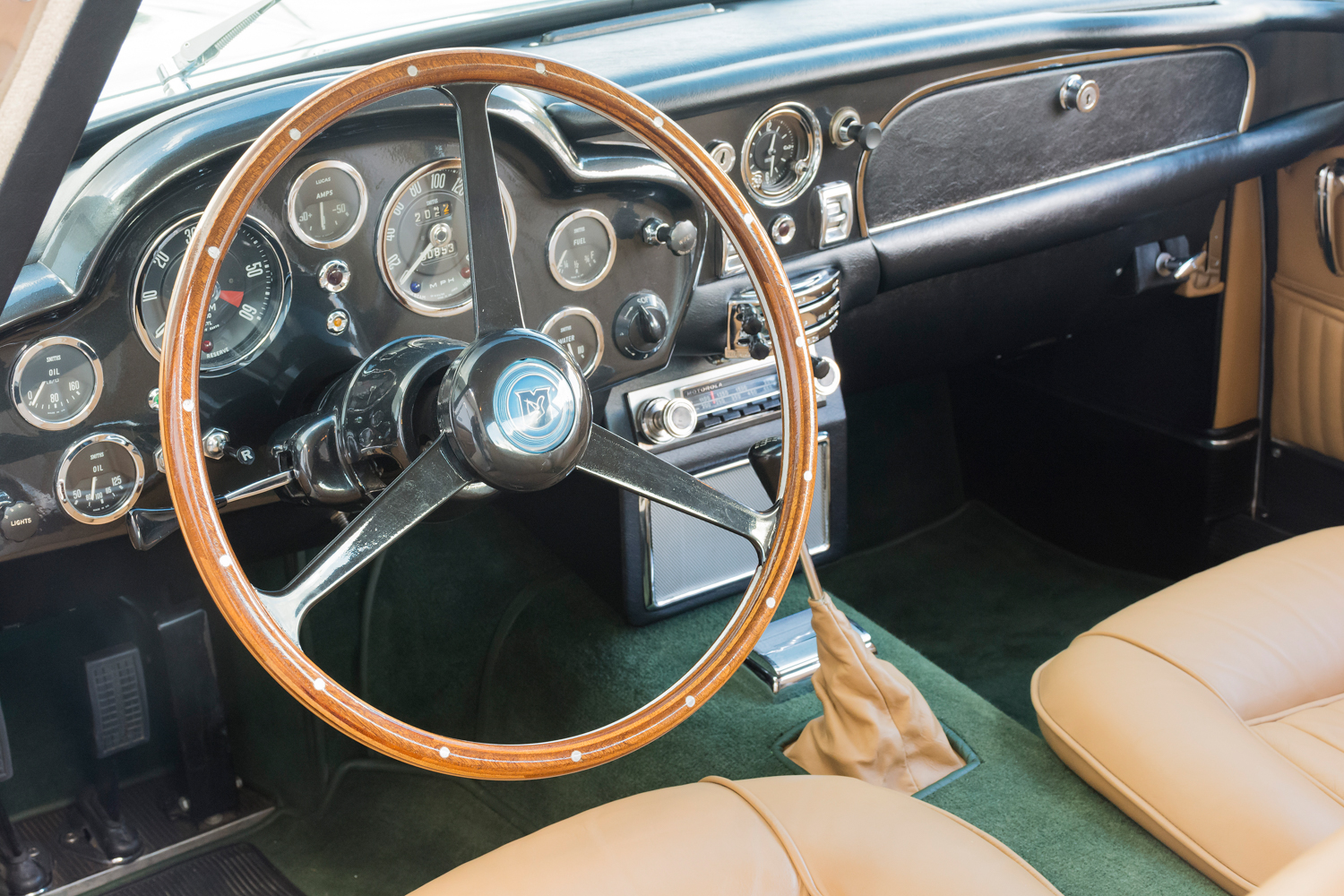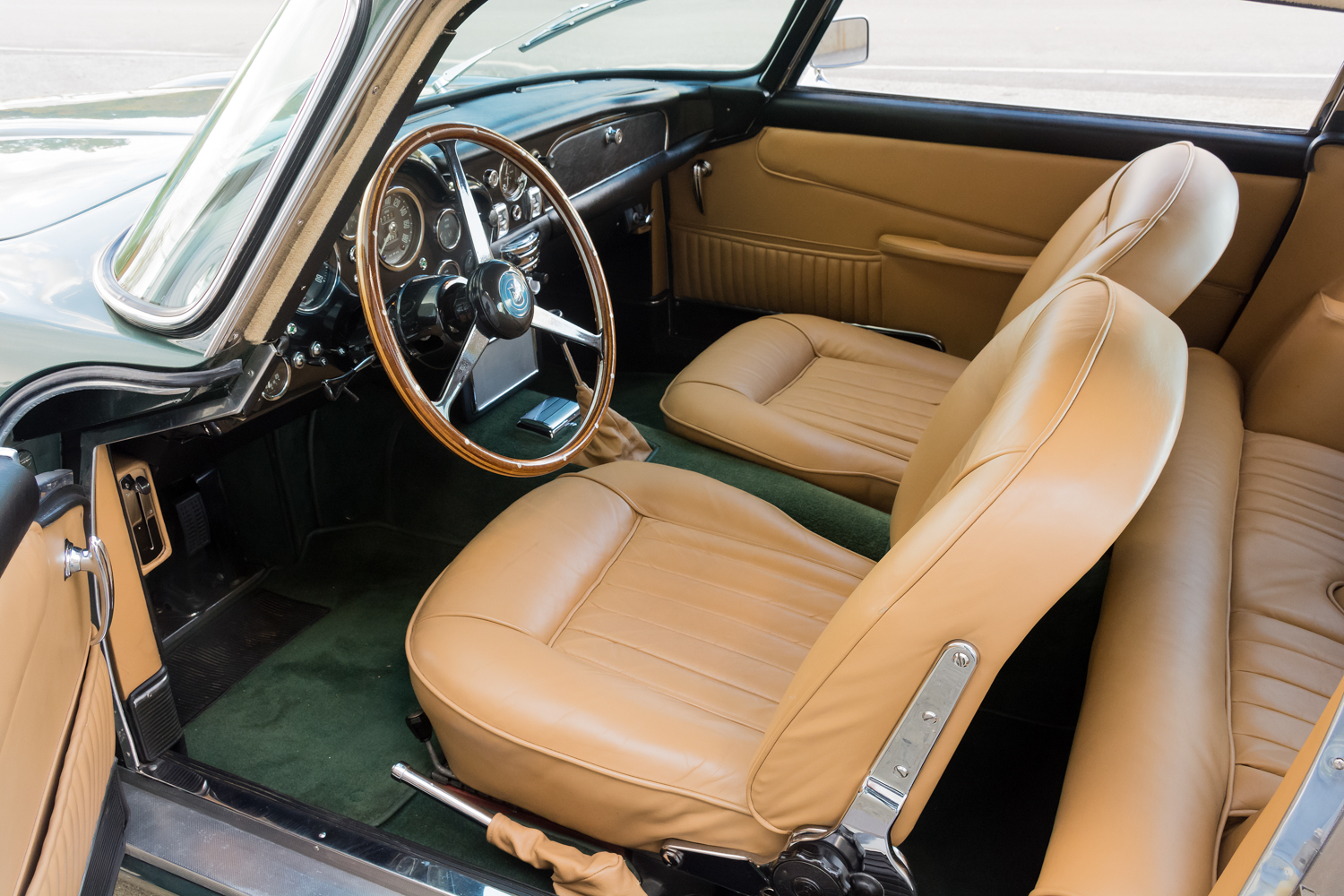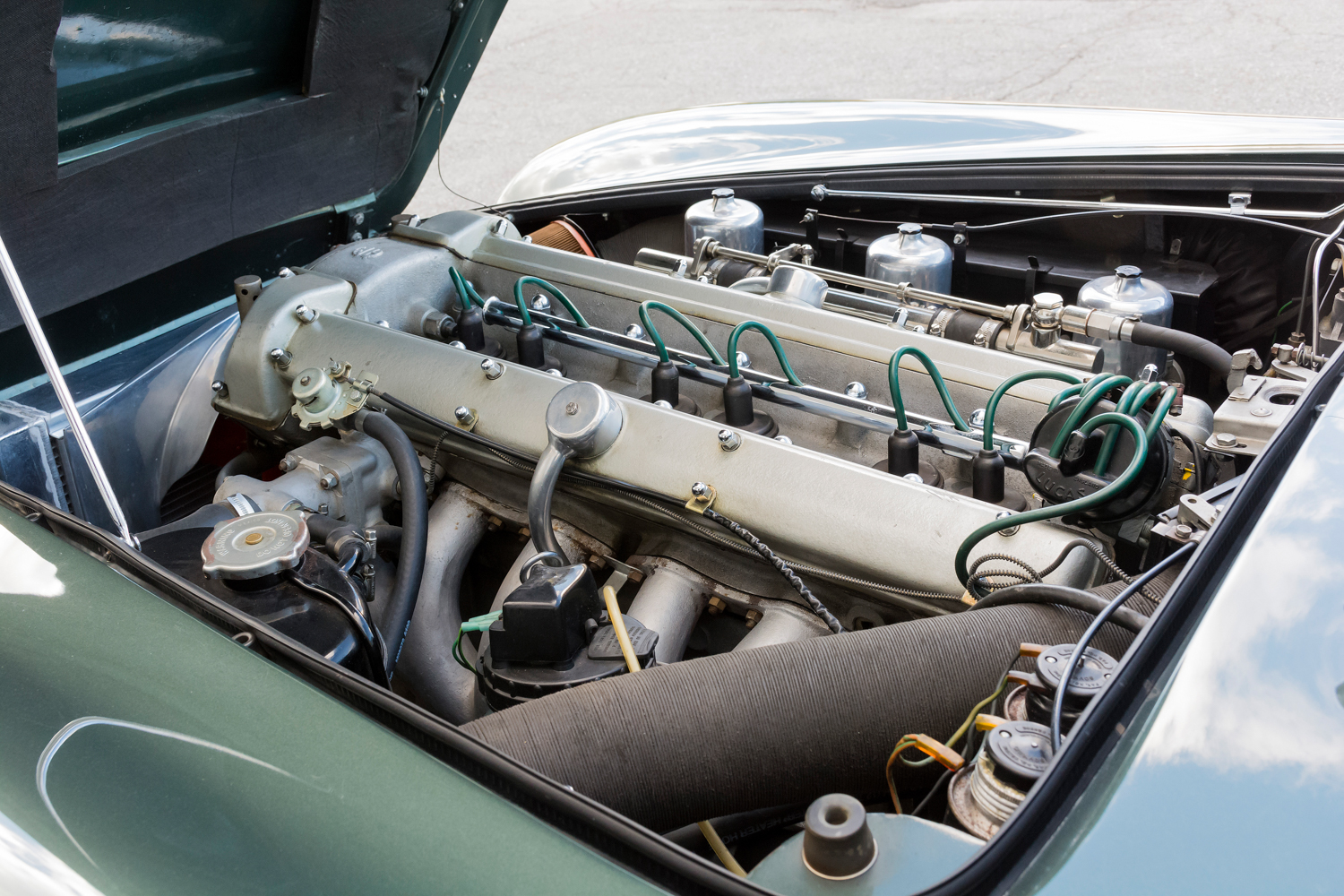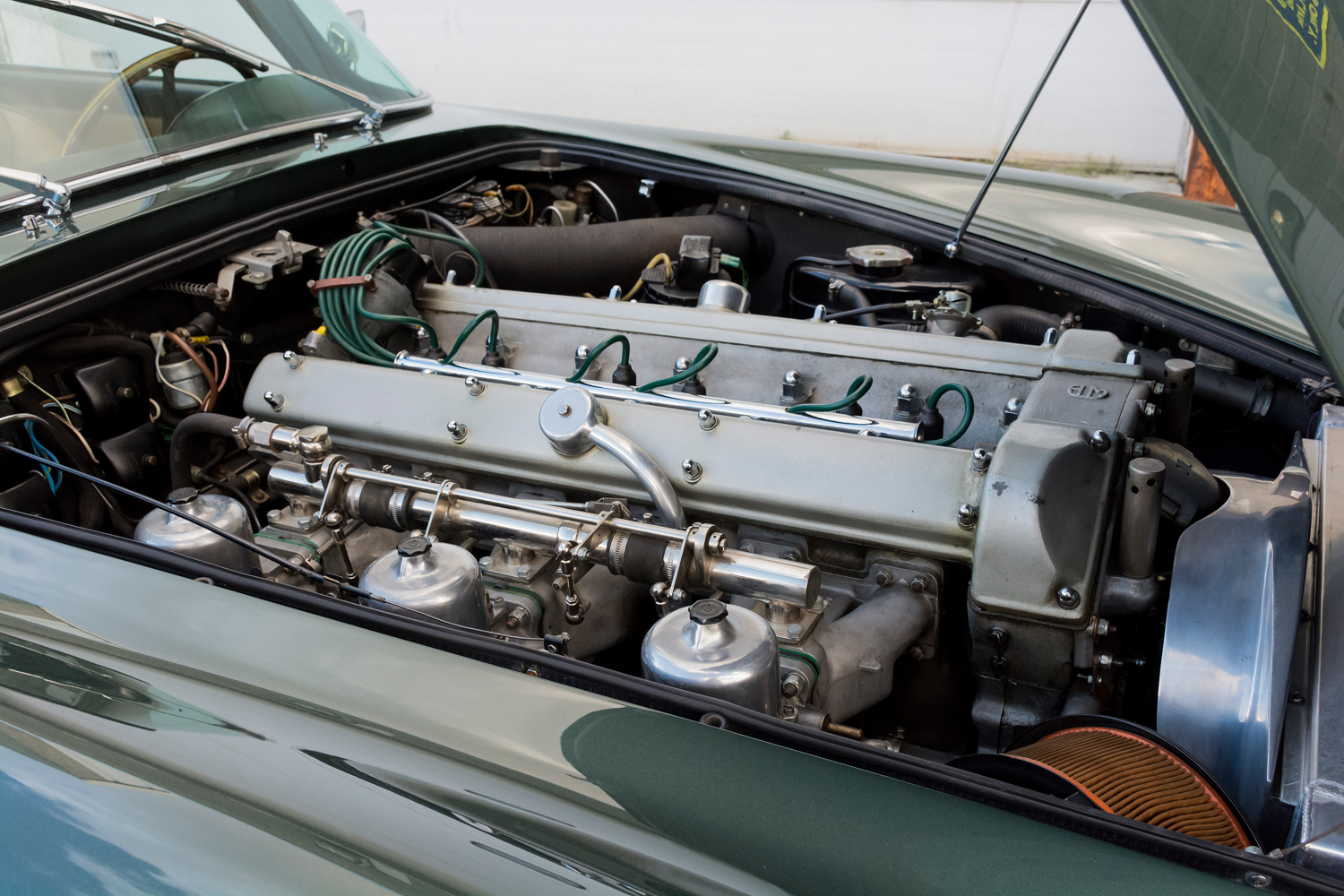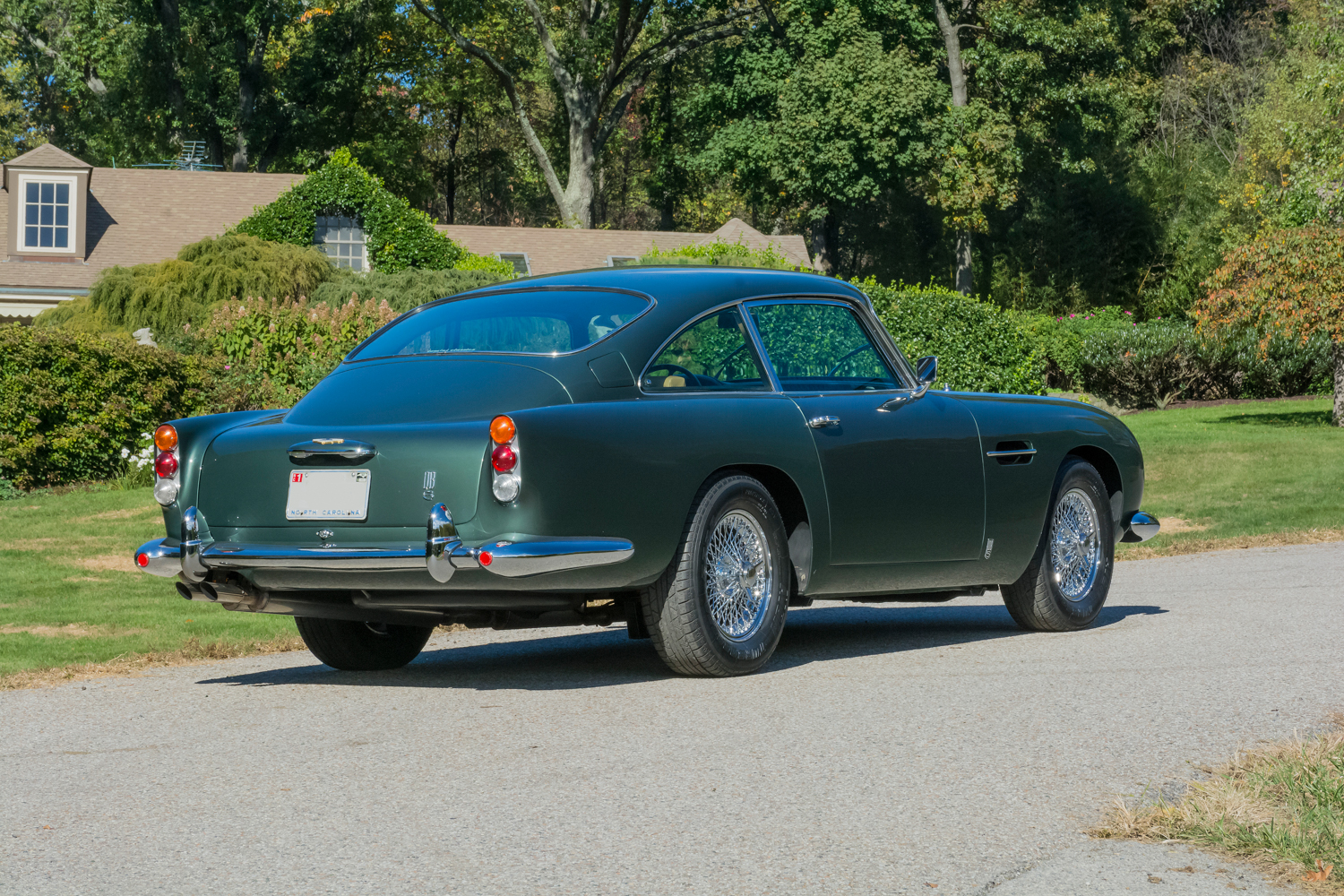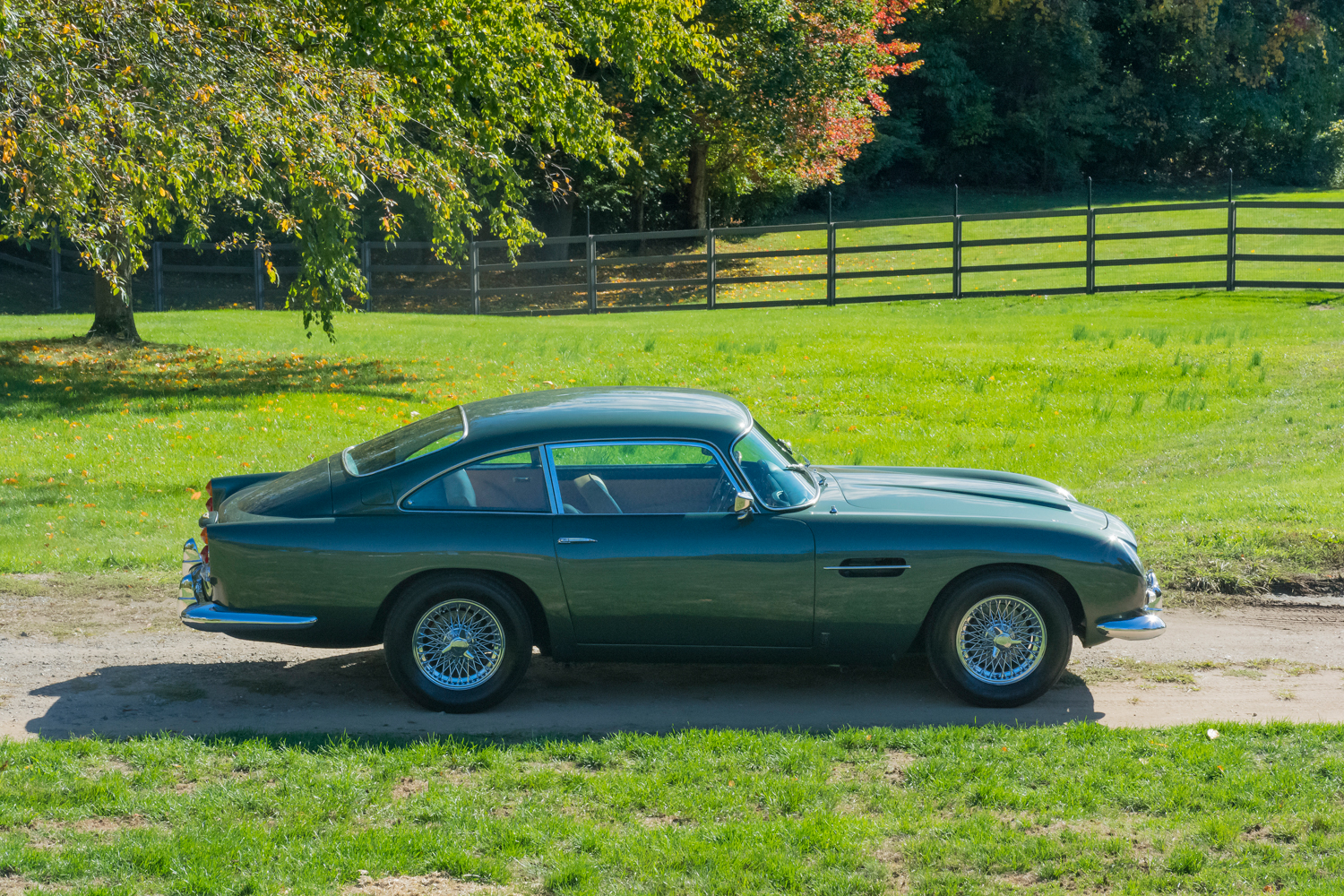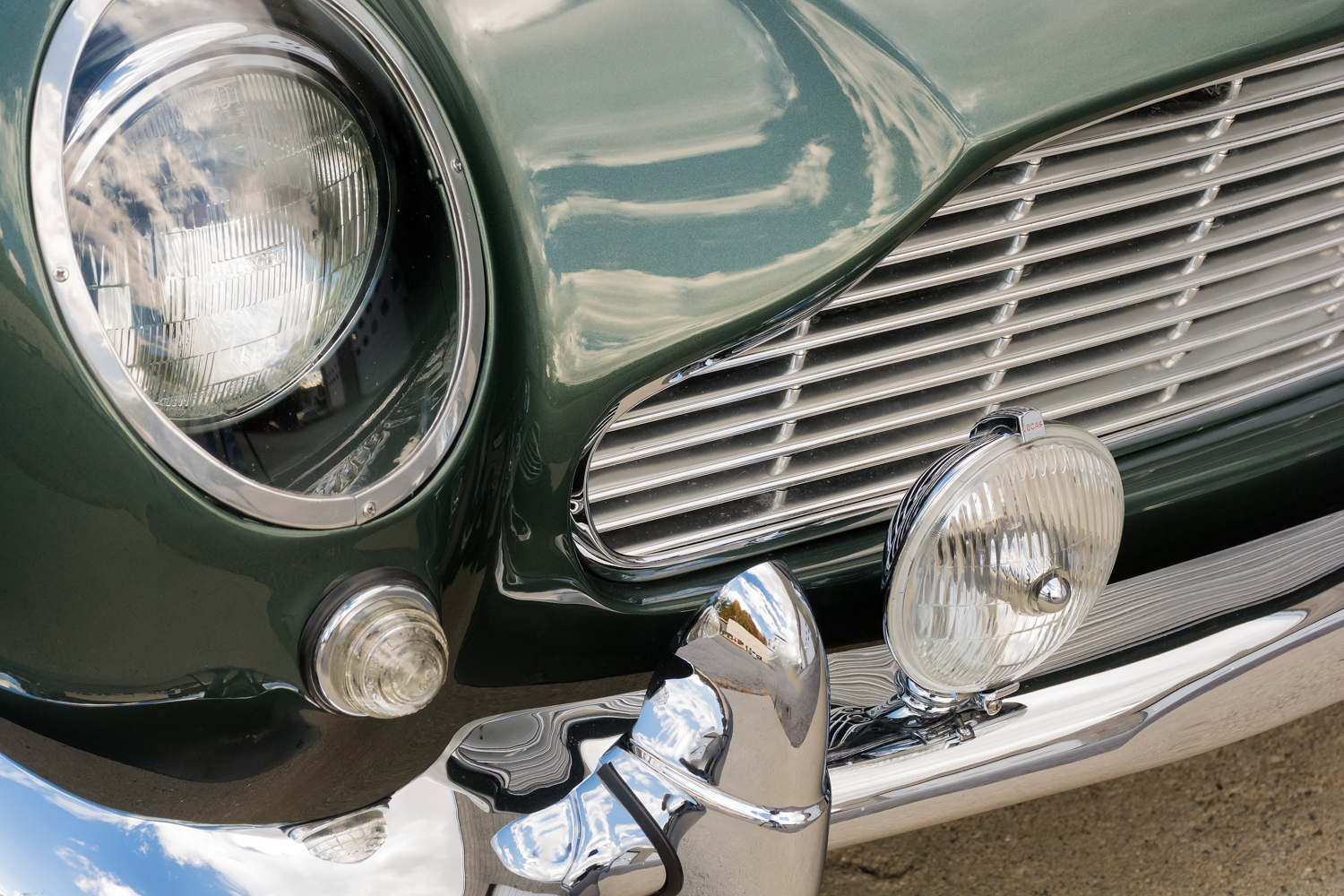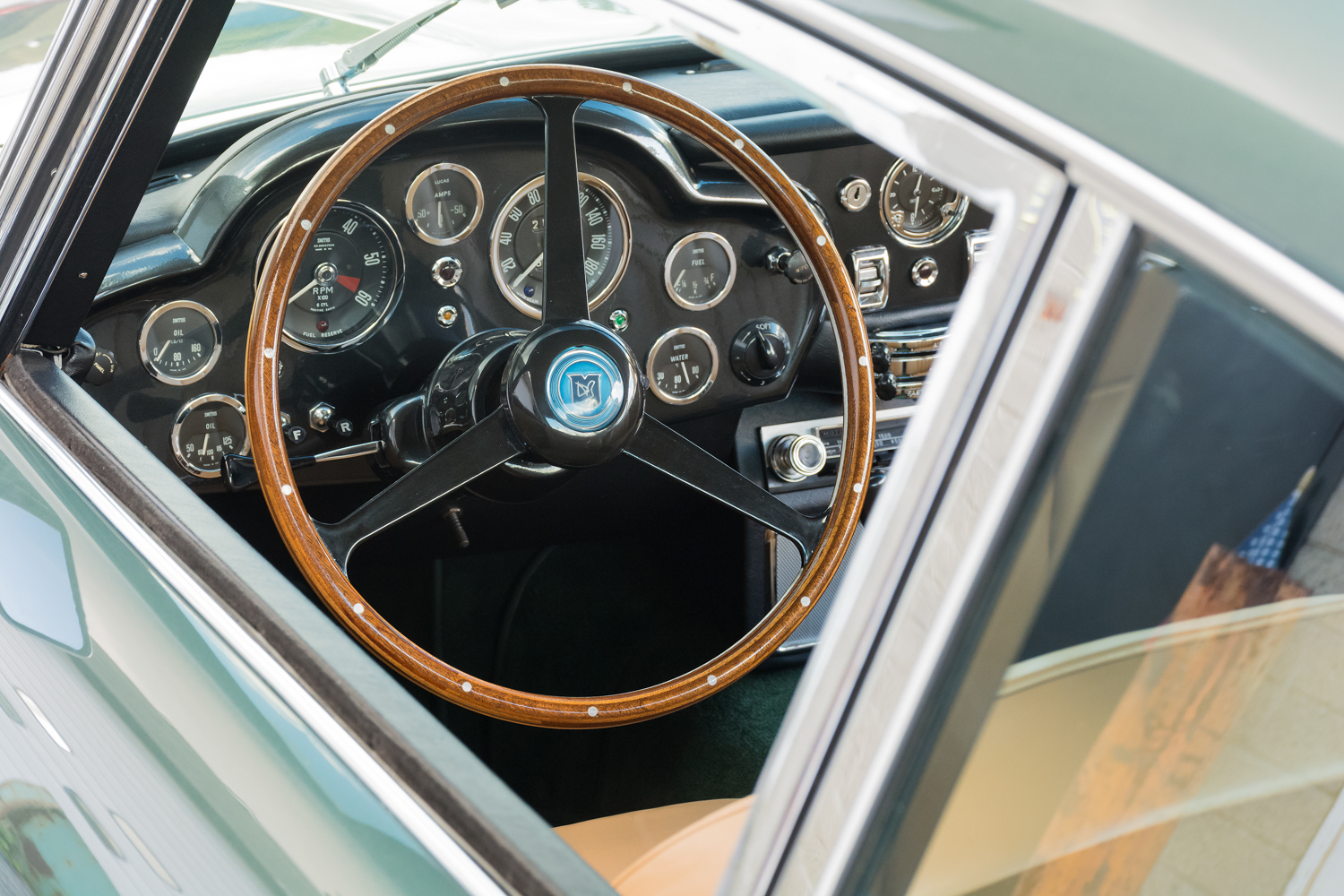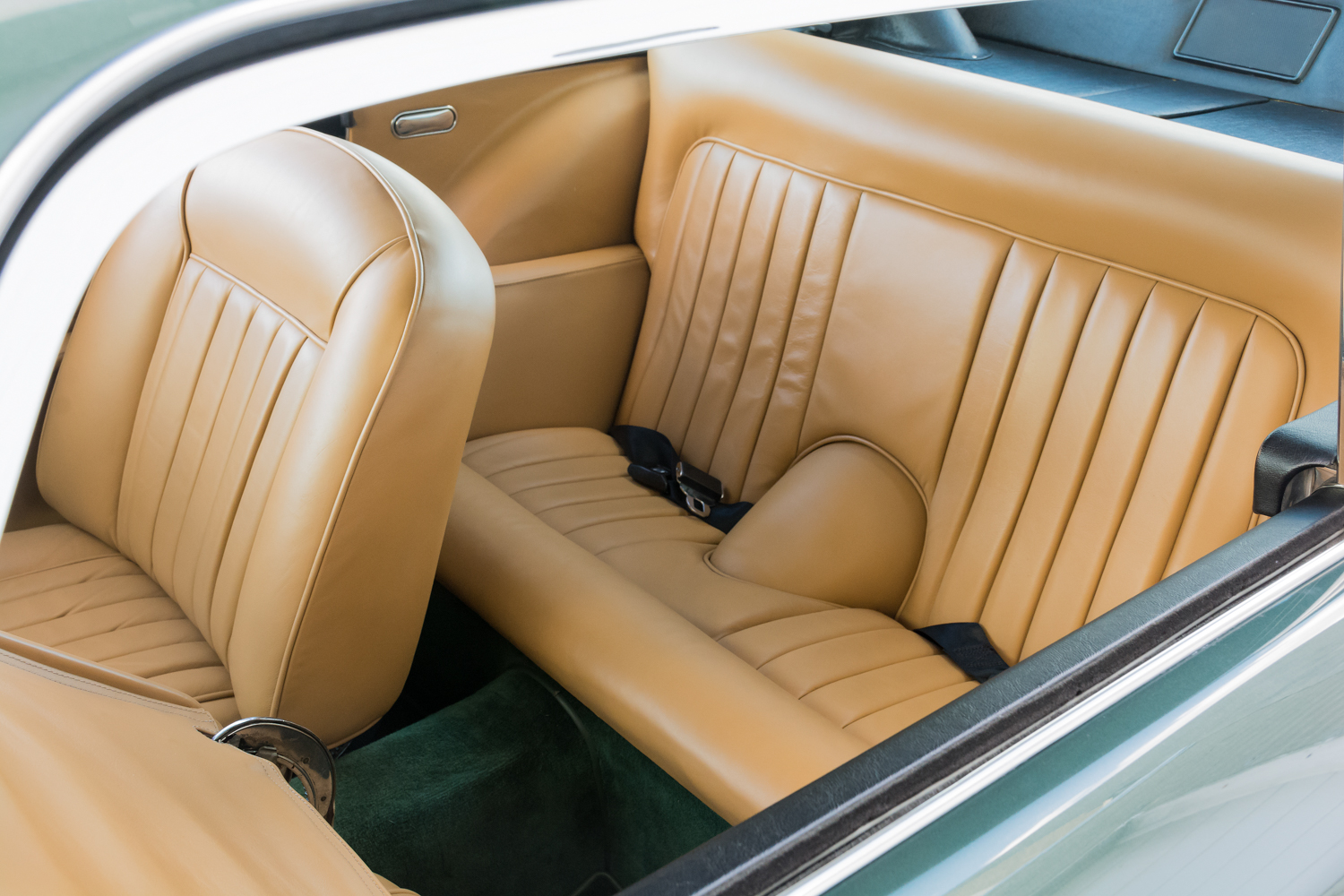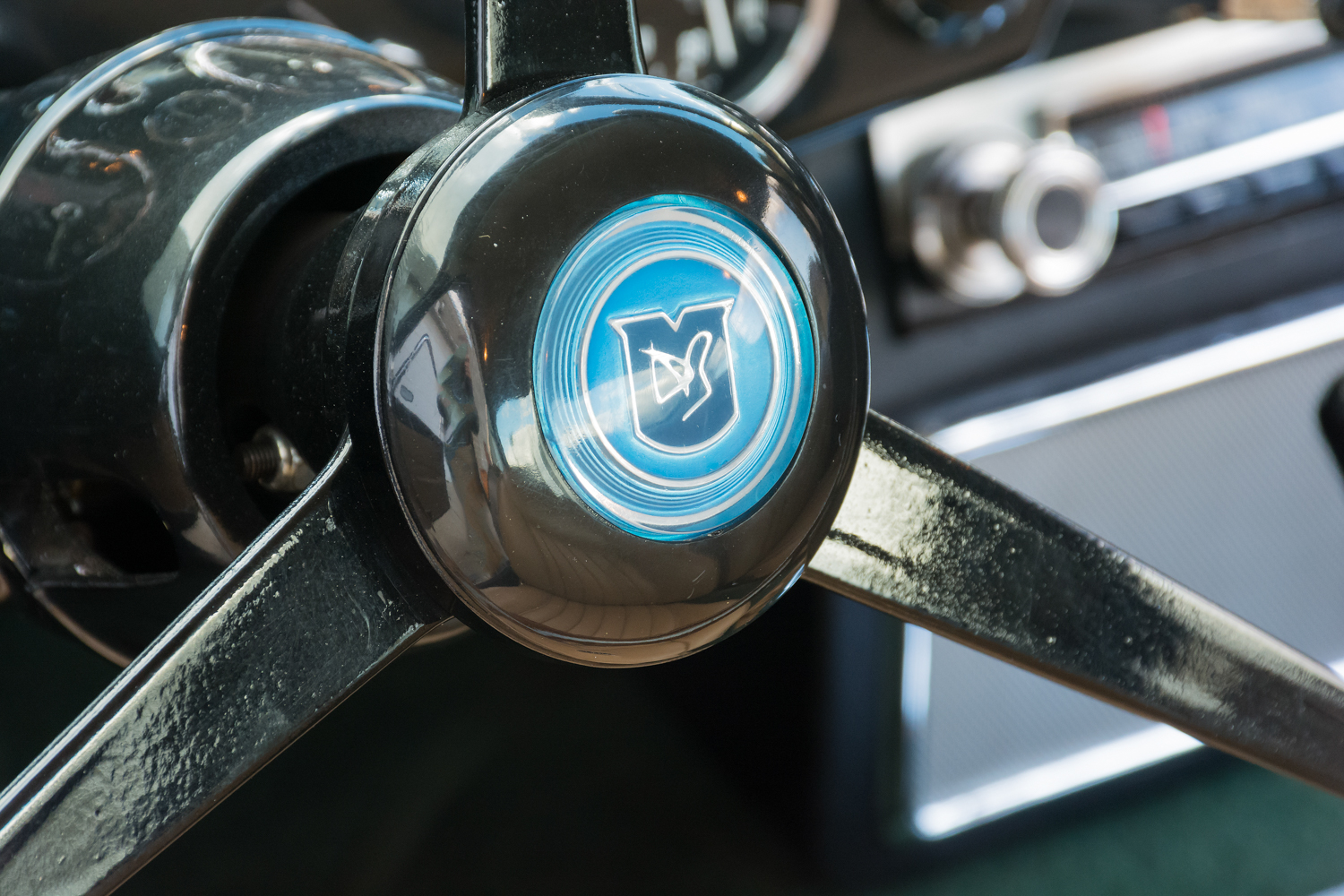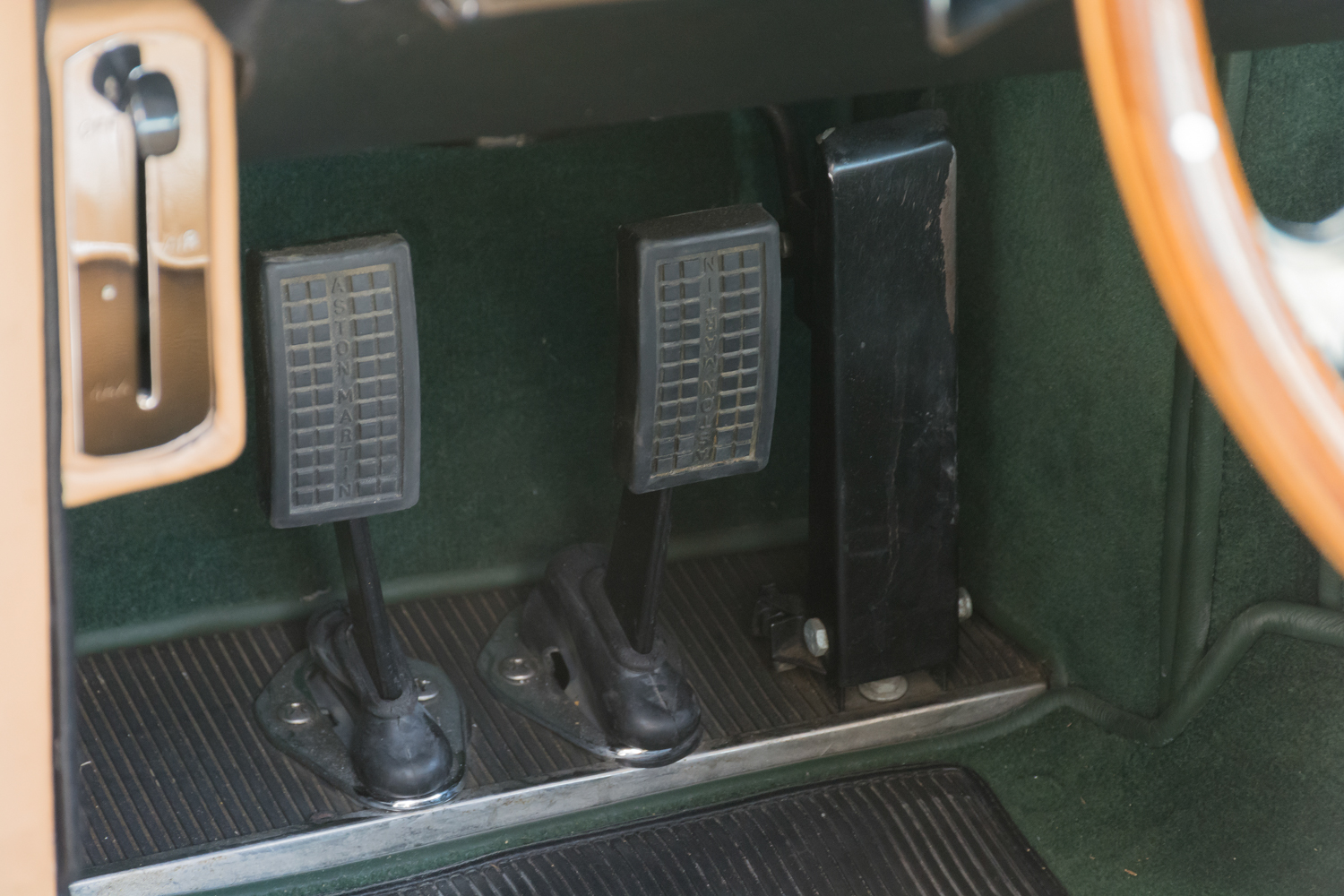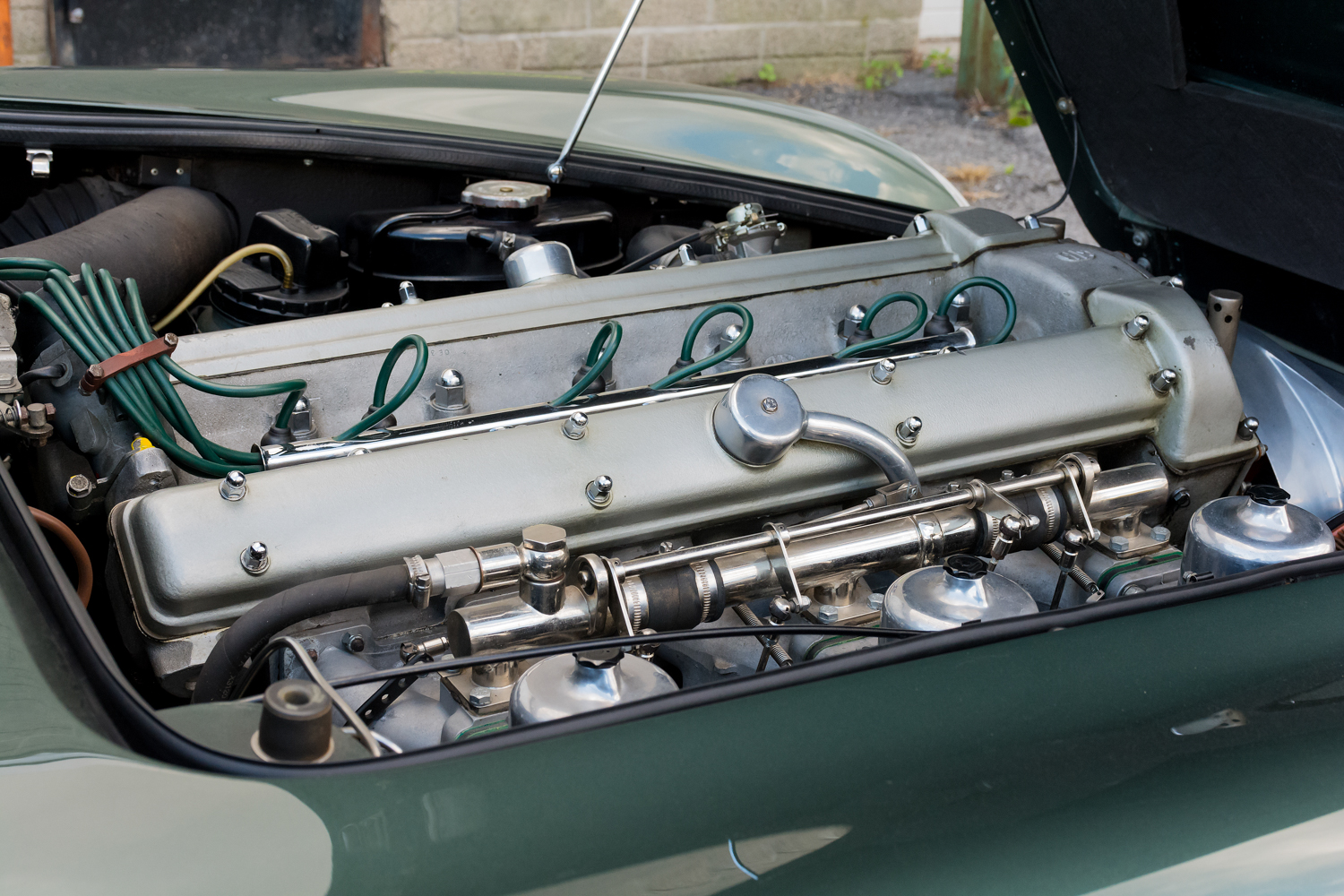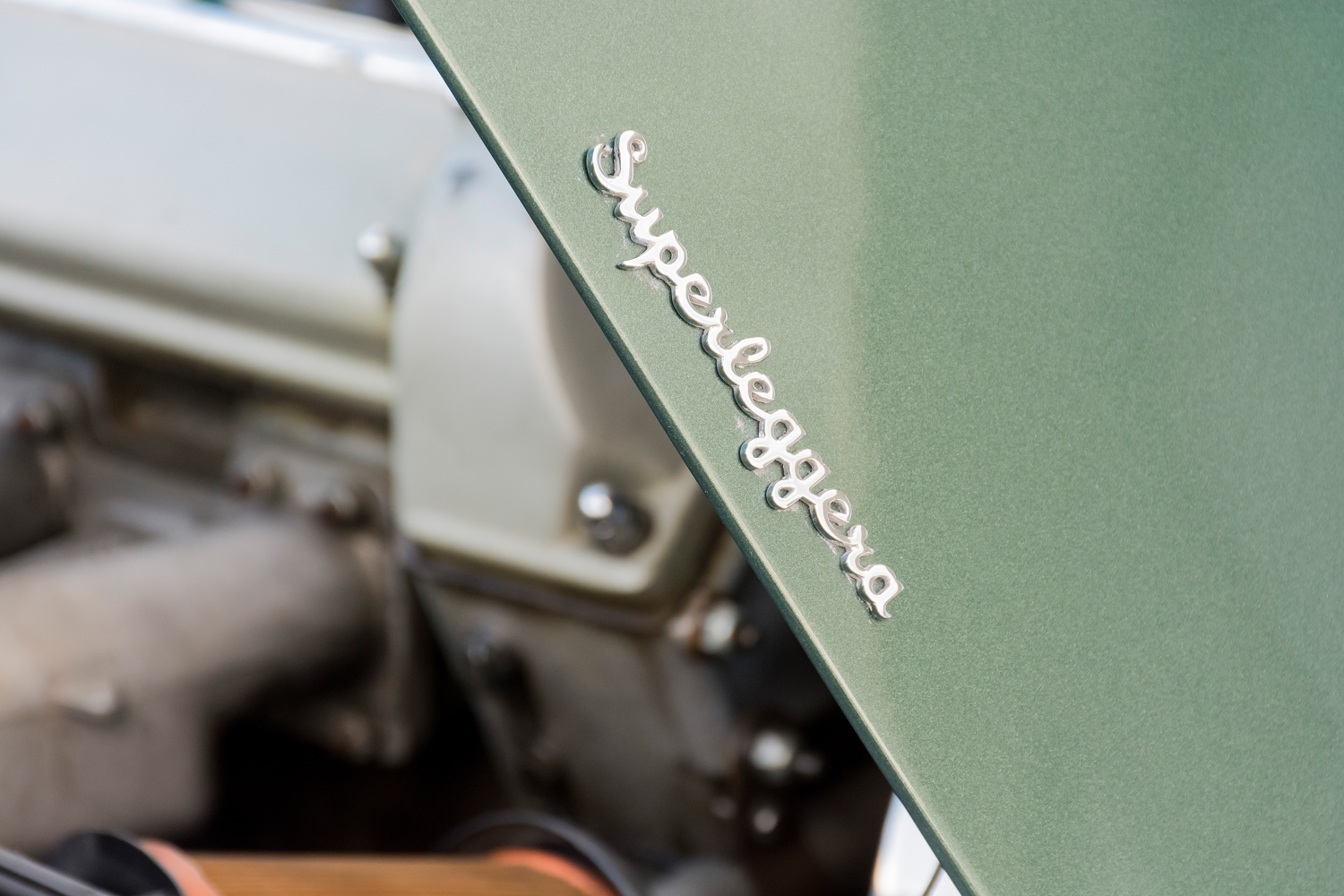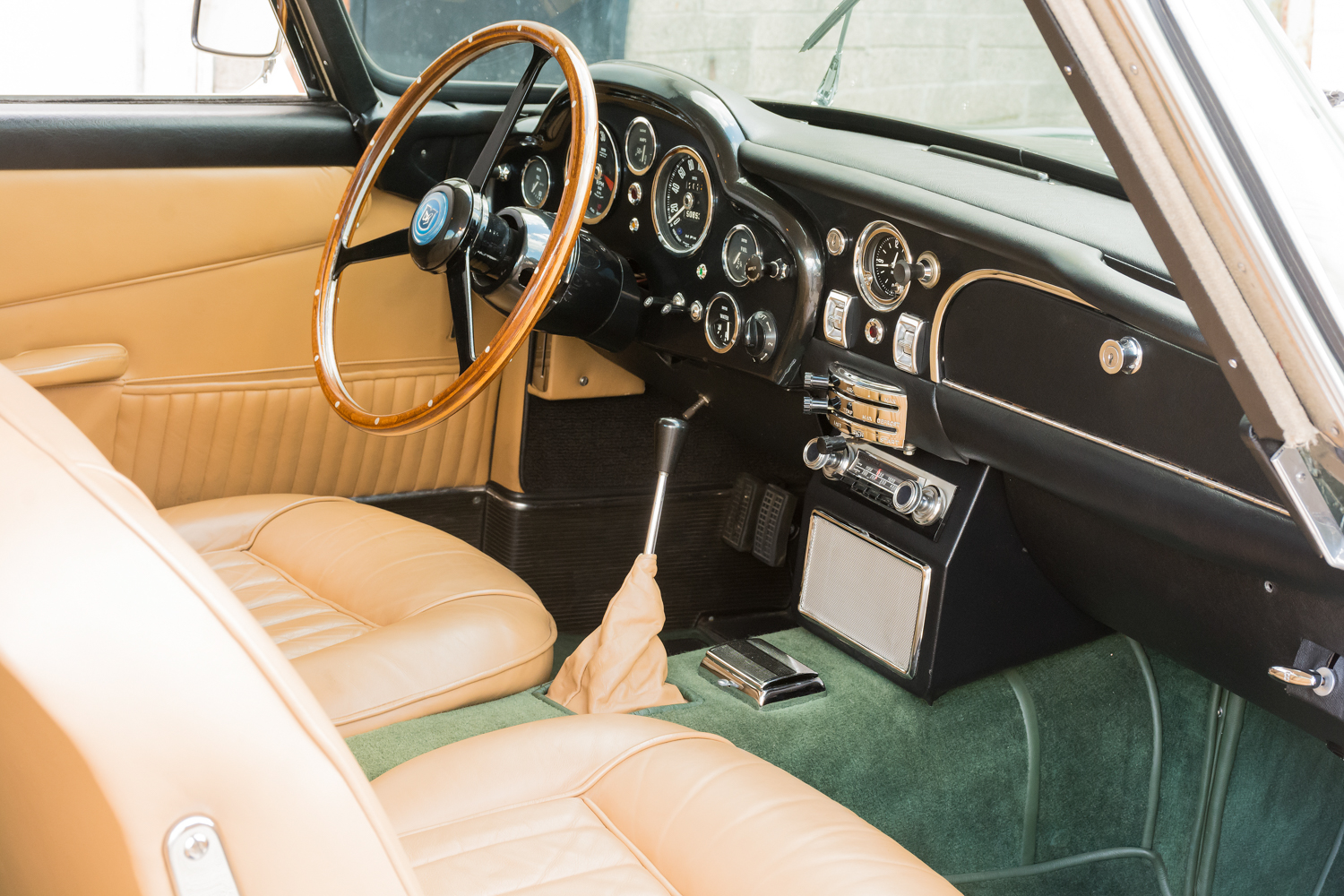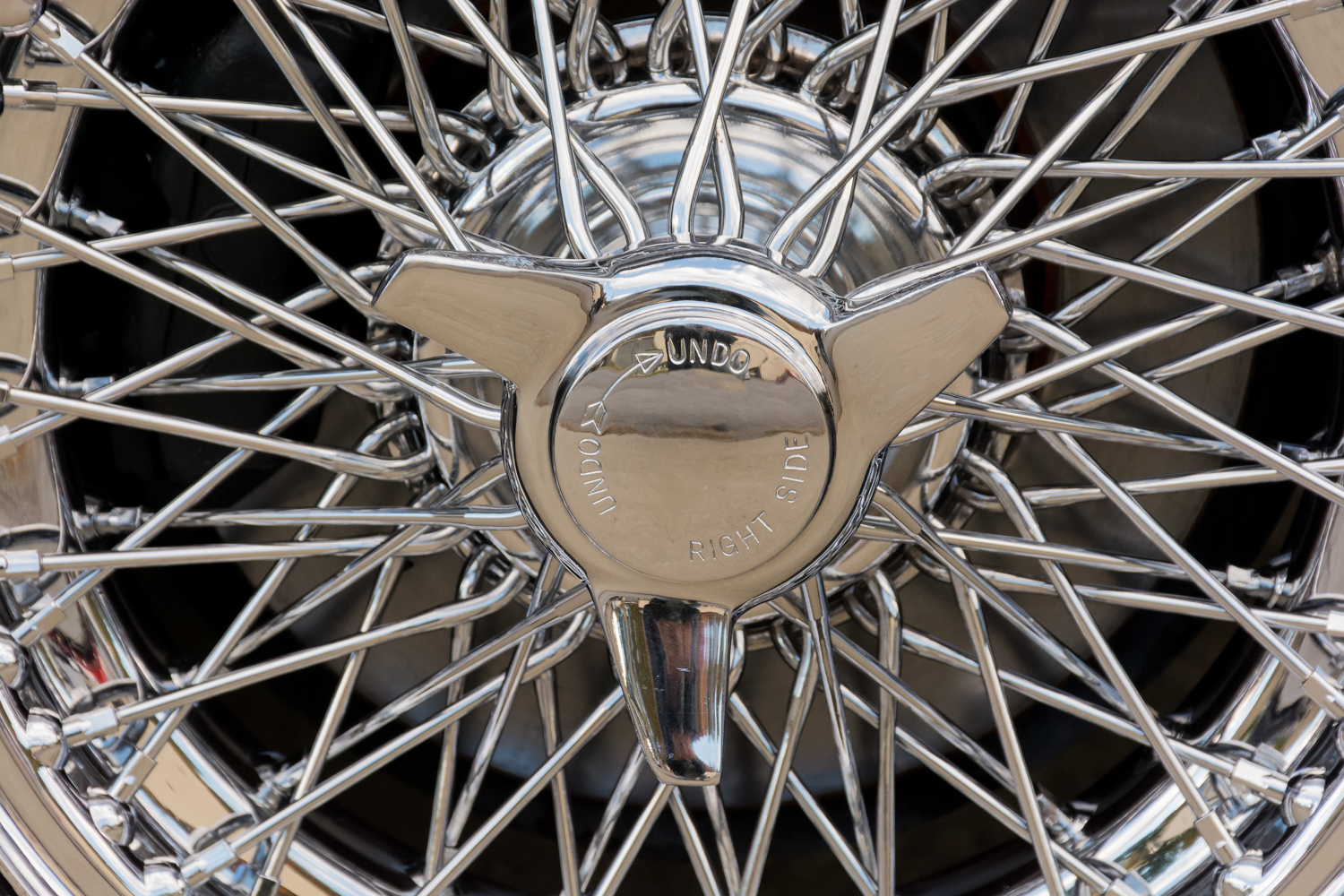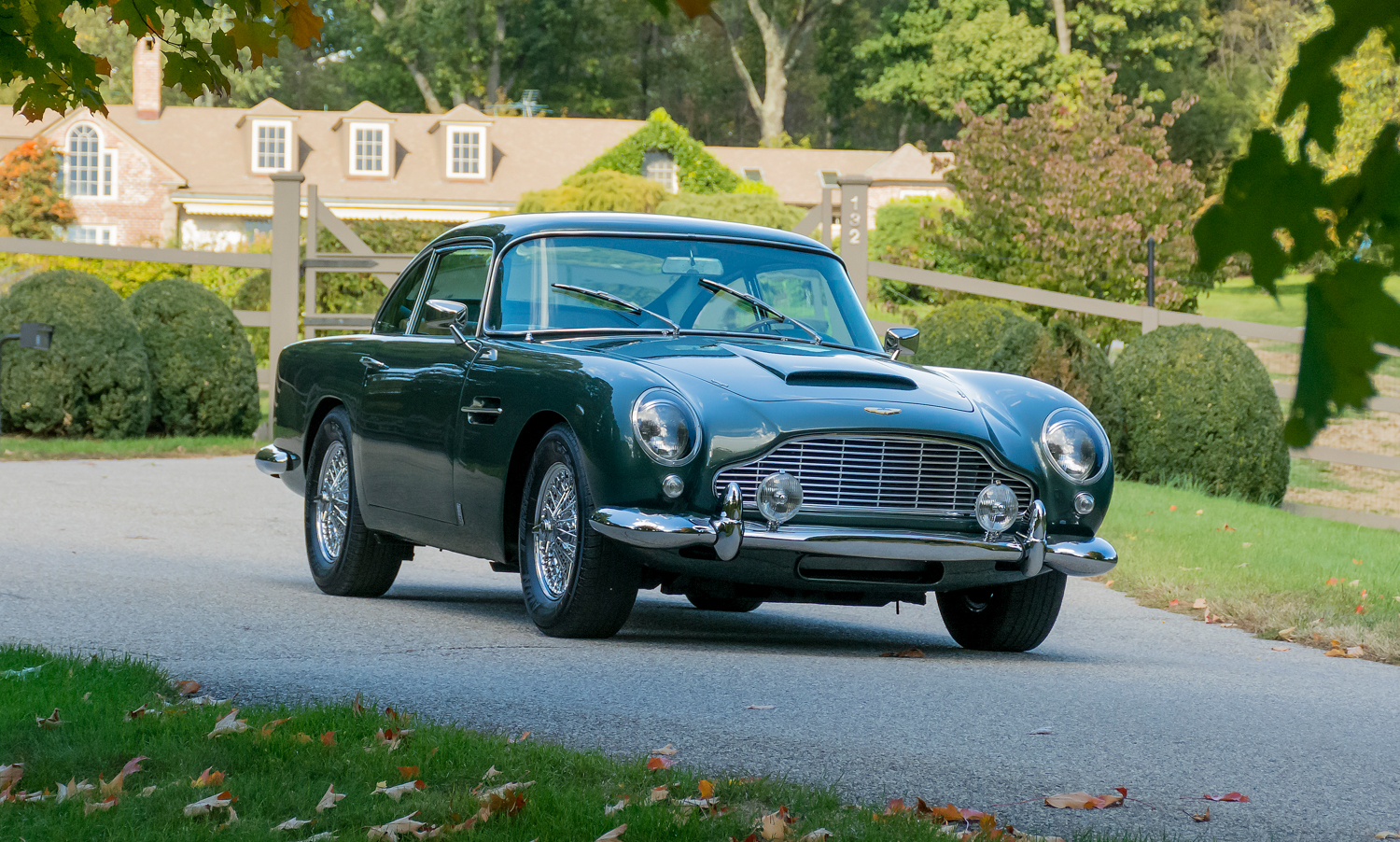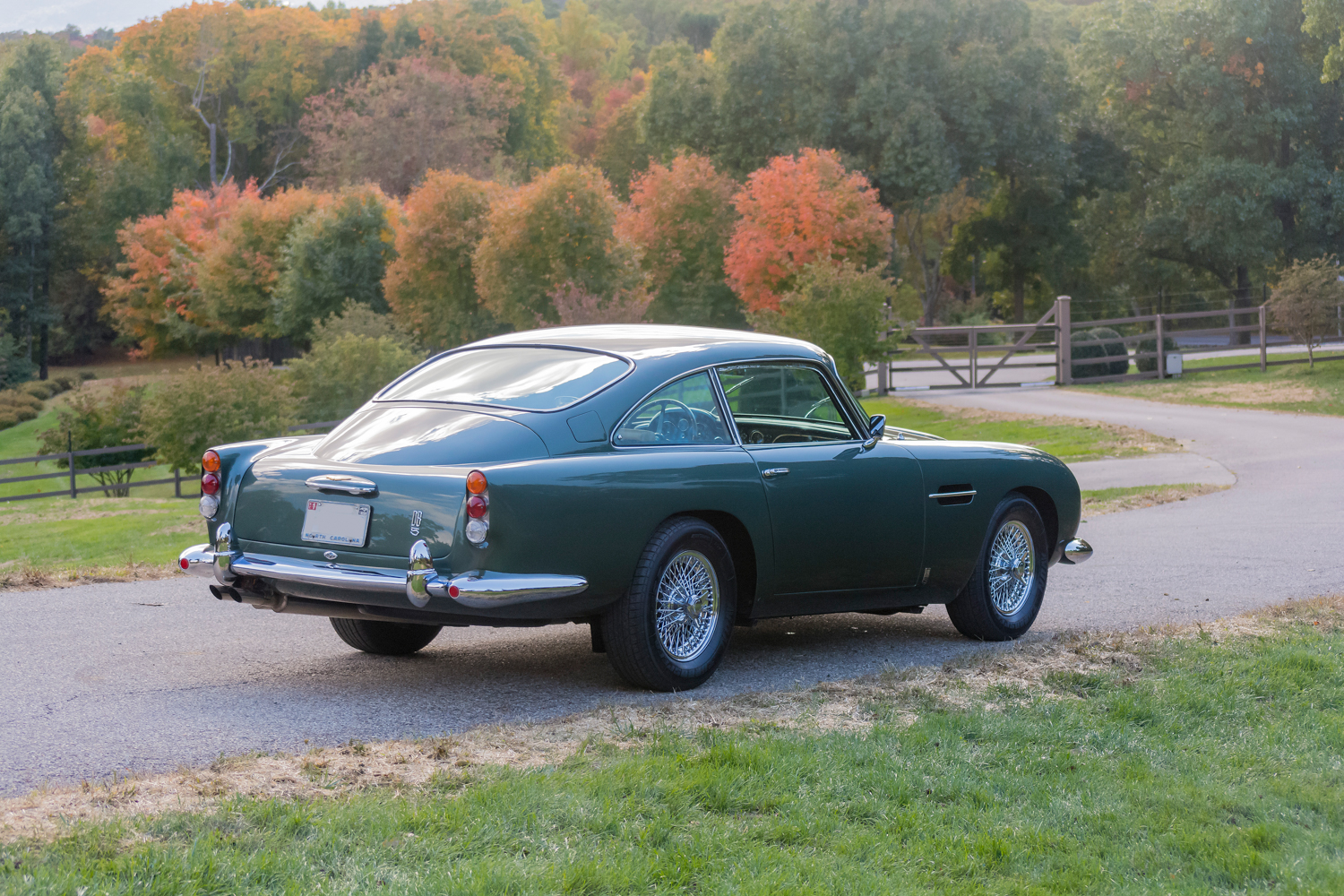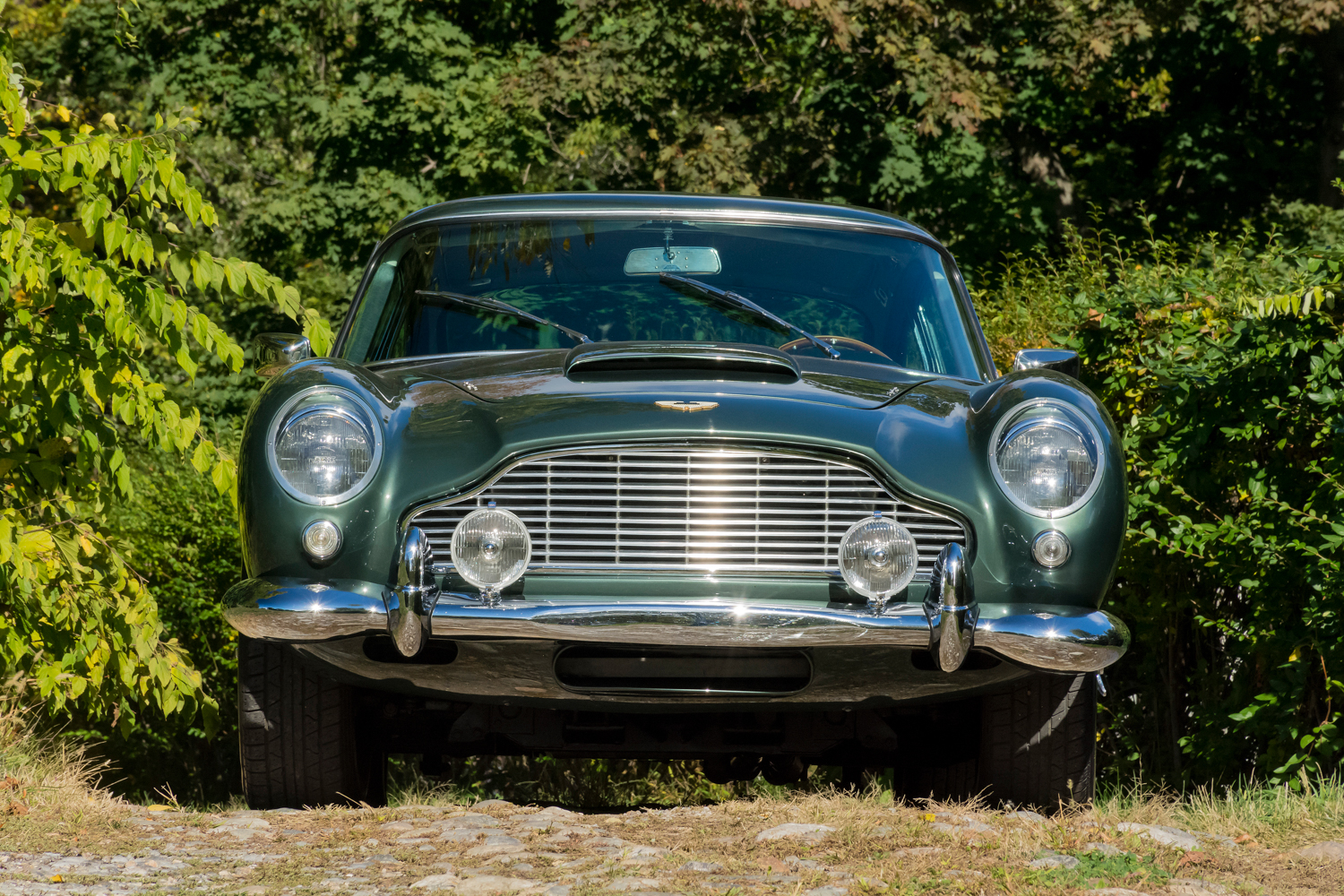When you hear the two words Aston and Martin, you unconsciously start playing the James Bond theme music in your head and picturing Sean Connery (or your choice of Bond) behind the wheel of his Silver Birch DB5. Despite it not being Bond’s first Aston it’s the one we will always see in our mind’s eye—even Daniel Craig drove one.
Competition is in the DB5’s genetics, the Tadek Marek designed motor under the bonnet is in all major respects the same one that powered the 4-liter prototype that did battle in the ’62 and ’63 24 Hours of Le Mans.
The DB5 was introduced in July of 1963 and was an evolution of the DB4 series rather than a whole new machine. The major change was the motor, which was increased to 4 liters, up from 3.7. The light alloy engine was equipped with triple SU carburetors and mated to a four-speed gearbox with overdrive—later models received a ZF five-speed box. On the outside of the DB5 there was little to distinguish the new model from later series DB4s. Some late series cars had the DB5’s twin filler caps and covered headlights.
However, underneath the Touring designed Superleggera bodywork there was a multitude of improvements. Girling brakes replaced the Dunlops, while Sundym glass, electric windows and an oil pressure gauge became standard equipment. Suspension was made up of unequal length wishbones at the front, whereas the rear received a live axle located by a Watts Linkage.
With its new motor spitting out 282 hp at 5,500 rpm, the DB5 could vault from 0 to 60 mph in 7.1 seconds, before reaching a top speed of 148 mph. This made the DB5 one of the fastest cars in the world at the time.
Aston Martin was on a mission. That mission was to create a world class GT car with the heart of a sports car, but still not skimp on the Connolly leather and deep pile Wilton carpet. It was to be the transport of a proper English Gent.
The DB5 has become such an iconic car, and is so closely associated with one particular “English Gent” that Aston Martin decided to create 28 new examples of the model—the DB5 “Goldfinger” continuation. These cars are built at the same Newport Pagnell plant using many of the same techniques, taking roughly 4,500 hours to complete. But there are several drawbacks. The continuation cars are not road legal, the machine guns don’t work, and they will cost $3.5 million each. So let’s get real and look at one of the more “mass produced” DB5s (898 total built). You can drive it on the road, but you can’t slash tires, or drop tacks, but on the upside it will only cost you a third the price.
Even being left-hand drive, the DB5—as with any Aston from the DB2 to the DB6—is inherently British. It just couldn’t come from any other country. It is the sophistication, and slightly snooty attitude, along with an air of the well-dressed thug, that brings out the anglophile in you.
The DB5 is sexy, but not in the way a Ferrari is sexy—it’s older Helen Mirren sexy, not Monica Bellucci sexy. There is an aura of restraint to its flowing lines.
Inside you find all the same materials you would find in a moneyed individual’s country estate. You are sitting on leather, your feet are surrounded by expensive carpeting and your hands grasp fine wood. All the Smiths dials are housed in a binnacle similar in shape to the Aston’s grille. The rest of the dash is no nonsense, clock, cigar lighter, window switches, and sliders for air, defrost and choke.
Turn the key and the inline-six barks to life with a very distinct sound and, even with a back seat, it’s a sports car, a very elegant sports car. The steering wheel has a solid feel in your hands and the tall skinny shifter moves with bolt-action precision. There is some body roll, but for a 55-year old machine, it is an entertaining and capable road car. The DB5 can hustle through turns with the best of them and cruise the highways with ease, yet do so with more style than many modern cars, even the ones that carry the same badge.
Even though you can’t launch someone out with the ejector seat or blind pursuers with smoke or grease, it’s just what her Majesty’s Secret Service or you would be happy to drive on the Scottish moors or Highway 1.
Specifications
| Length | 180 inches |
| Width | 66 inches |
| Height: | 53 inches |
| Wheelbase | 98 inches |
| Front track | 54 inches |
| Rear track | 53.5 inches |
| Weight | 3232 lbs |
| Engine | inline-6, 4-liter triple SU carburetors |
| Bore | 3.78 inches |
| Stroke | 3.62 inches |
| Compression | 8.9 : 1 |
| Horsepower | 282 @ 5500 rpm |
| Torque | 288 ft-lb @ 3850 rpm |
Valuation
$900,000- $1,150,000


